CNC Machining Plastic: Everything You Need to Know
The plastics industry has always been one of the fastest growing sectors in global manufacturing. However, achieving high-qualityPlastic production remains a significant challenge due to limited resources and complexity.
This article explores CNC Machining Plastic – an innovative solution that combines precision, efficiency, and versatility to revolutionizePlastic fabrication. From advanced surface treatments to sustainable manufacturing practices, CNC machining Plastic offers cutting-edge technology tailored for modernPlastic industries.
What is CNC Machining Plastic?
CNC Machining Plastic refers to a specialized tooling and machinery system designed to produce high-performancePlastic components with exceptional precision and quality. Unlike traditional manual or semi-automatic plastic fabrication methods, CNC machining Plastic utilizes computer-assisted manufacturing techniques to optimize the production process.
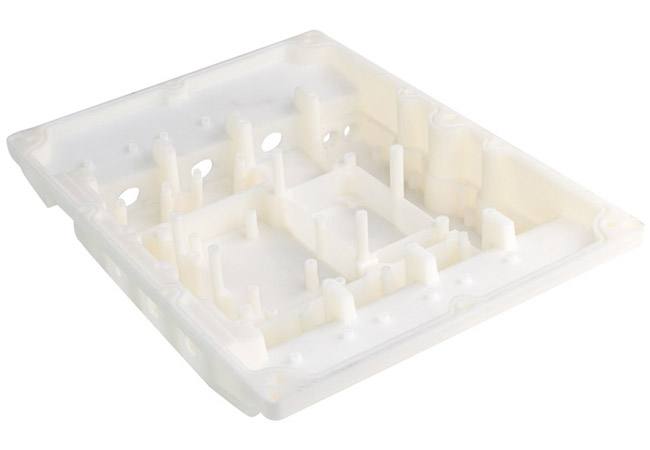
Can Plastics Be CNC Machined?
Yes, plastics can be CNC machined. In fact, CNC machining is commonly used to create precise plastic parts and prototypes. Plastics such as acrylic, polycarbonate, nylon, and ABS are particularly popular for CNC machining due to their versatility and ease of machining. The process allows for intricate designs, smooth finishes, and tight tolerances. Key considerations include selecting the right tool, controlling feed rates, and managing heat to prevent the plastic from melting or warping during the machining process.
Why Choose CNC Plastics?
CNC machining for plastics offers numerous advantages that make it an ideal choice for manufacturers looking for precision, sustainability, and versatility. By using advanced machining techniques, CNC plastics ensure efficiency while catering to a wide array of industries and applications. Below are some key reasons why CNC plastics are becoming a popular choice in modern manufacturing:
1. Precision and Efficiency:
CNC machining systems eliminate the need for multiple tools and human intervention, allowing for faster and more accurate part production. This precision reduces waste and enhances overall manufacturing efficiency.
2. Sustainability in Manufacturing:
CNC machining Plastic leverages biodegradable plastic materials like polypropylene (PP) or recycled Plastics, contributing to a greener future while reducing reliance on new resources.
3. Versatility:
CNC machining systems can be used across various industries, including automotive, aerospace, medical devices, and more. It is particularly valuable in complex component production where manual setups are impractical.
4. Innovation and Research:
The demand for advanced plastic manufacturing technologies has created opportunities for research and development. CNCmachining plastic remains a key area of focus for innovation in the global plastic industry.
What Are the Common CNC Machining Plastics?
CNC machining is widely used to process various types of plastics that have distinct mechanical and thermal properties. Understanding the characteristics of these plastics is essential to choosing the right material for a given application. Below are some of the most common plastics used in CNC machining and their key properties:
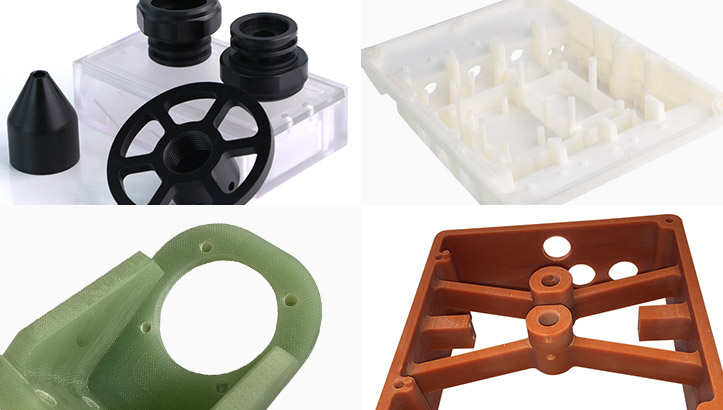
1. Acrylic (PMMA)
Acrylic, also known as polymethyl methacrylate (PMMA), is a versatile plastic commonly used in CNC machining. It is known for its transparency, making it ideal for applications where clarity is essential (e.g., optical components, display cases). Acrylic is relatively easy to machine, offering smooth finishes and low friction. It is also lightweight, but may be more prone to cracking under stress compared to other plastics. It’s an excellent choice for prototypes and consumer goods.
2. Polycarbonate (PC)
Polycarbonate is a tough, durable, and transparent plastic known for its impact resistance. It is used in demanding applications such as automotive headlights, eyewear lenses, and electronic housings. Polycarbonate can be easily machined, but it requires careful temperature control during CNC machining to avoid warping. Its high strength and heat resistance make it ideal for high-performance parts, although it is slightly more challenging to process than acrylic.
3. Nylon (Polyamide)
Nylon is a widely used engineering plastic with excellent wear resistance and toughness. It is commonly used in the production of gears, bearings, and other parts subjected to friction. Nylon is easy to machine and can be used in a wide range of applications, from automotive components to industrial machinery. Its ability to absorb moisture can affect its properties, so manufacturers need to be mindful of humidity levels during the machining process.
4. PVC (Polyvinyl Chloride)
PVC is a cost-effective, durable plastic often used for pipes, fittings, and industrial components. It is resistant to chemicals and has a high resistance to corrosion, making it ideal for plumbing and electrical applications. PVC is easy to machine and offers a relatively low cost compared to other engineering plastics, but it has lower impact resistance and can be prone to cracking under stress.
What CNC Machining Process is Most Suitable for Plastics?
Different CNC machining processes are used to achieve specific results when working with various plastics. The most commonly used processes for machining plastics like acrylic, polycarbonate, and nylon include:
1. Milling
Milling is one of the most common CNC processes for machining plastics. It is highly versatile and can produce flat surfaces, slots, grooves, and complex geometries in plastic materials. Milling is particularly effective for materials like acrylic and polycarbonate, which are easy to machine and yield high-quality finishes. For materials like nylon, a slower feed rate and specialized tooling may be required to avoid excessive heat buildup, which could cause material deformation.
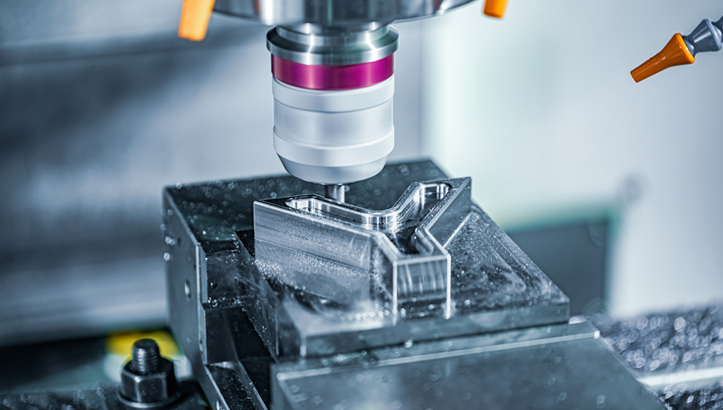
2. Turning
Turning is ideal for machining cylindrical shapes or parts with a rotational symmetry, such as rods, tubes, or shafts. This process is commonly used for materials like PVC and nylon, as it provides precision and allows for high-speed processing. Polycarbonate can also be turned effectively, although it may require cooling to prevent heat distortion. Turning is less suitable for transparent materials like acrylic, as it may leave visible tool marks that reduce the quality of the surface finish.
3. Drilling
Drilling is essential for creating holes in plastic parts, and it is commonly used in applications such as electrical enclosures, fittings, or connectors. When drilling plastics like polycarbonate or acrylic, specialized drills with reduced point angles are often used to avoid cracking or chipping. Drilling works well with most machinable plastics, but cooling systems may be required to prevent material overheating, particularly when drilling through thicker sections of plastics like polycarbonate.
More Resources: CNC Drilling Technology and Its Application
Study Guide: CNC Milling vs CNC Drilling
4. Routing
Routing is ideal for cutting larger shapes or profiles from sheets of plastic, commonly used in sign-making, sheet-cutting, and engraving applications. It’s particularly effective for soft plastics like acrylic and PVC. Routing is also commonly used for engraving detailed designs or logos onto plastic parts. The key challenge with routing plastics is managing the chip removal process, as certain plastics can melt or clog the tool if not handled properly.
Applications of CNC Machining Plastic
CNC machining for plastics has become essential in various industries that require high precision, durability, and efficiency in the production of components. Whether it’s creating intricate parts for aerospace or custom solutions for medical devices, CNC machining offers versatility across multiple sectors. Below are some of the key applications where CNC machining plastic excels:
Automotive Industry
CNC machining plastic is extensively used in the automotive sector for producing components like dashboards, trims, bumpers, and engine parts. The precision offered by CNC machines ensures that these parts meet stringent industry standards, providing a reliable, cost-effective solution for automotive manufacturers. By leveraging lightweight plastic materials, manufacturers can also reduce the overall weight of vehicles, enhancing fuel efficiency without compromising strength or durability.
Aerospace
In the aerospace industry, CNC machining plays a crucial role in the production of complex and highly accurate parts such as wing components, fuselage panels, and cockpit displays. Plastics like carbon fiber composites, thermosets, and other advanced polymers are often machined using CNC technology for their excellent strength-to-weight ratios. CNC machining ensures that these critical components maintain the required quality and performance while meeting the stringent safety and regulatory standards of the aerospace industry.
Medical Devices
CNC machining is indispensable in the medical field, particularly in the production of prosthetics, implants, and diagnostic equipment. The high precision and customization capabilities of CNC machining allow for the creation of medical devices with tight tolerances, ensuring functionality and comfort. Plastic materials used in medical devices—such as bio-compatible polymers and flexible plastics—are often machined to exact specifications, enabling the production of safe, reliable, and cost-effective solutions for healthcare applications.
Custom Manufacturing
One of the standout features of CNC machining plastic is its ability to produce custom components for unique applications. Whether for prototypes, short-run production, or one-off custom parts, CNC machining enables manufacturers to create tailored solutions that meet specific customer needs. This process reduces material waste and allows for the use of a wide range of plastic materials, including flexible plastics, rigid polymers, and advanced composites. Custom manufacturing is highly efficient, and it ensures that customers get exactly what they need, without the excess cost and time associated with traditional methods.
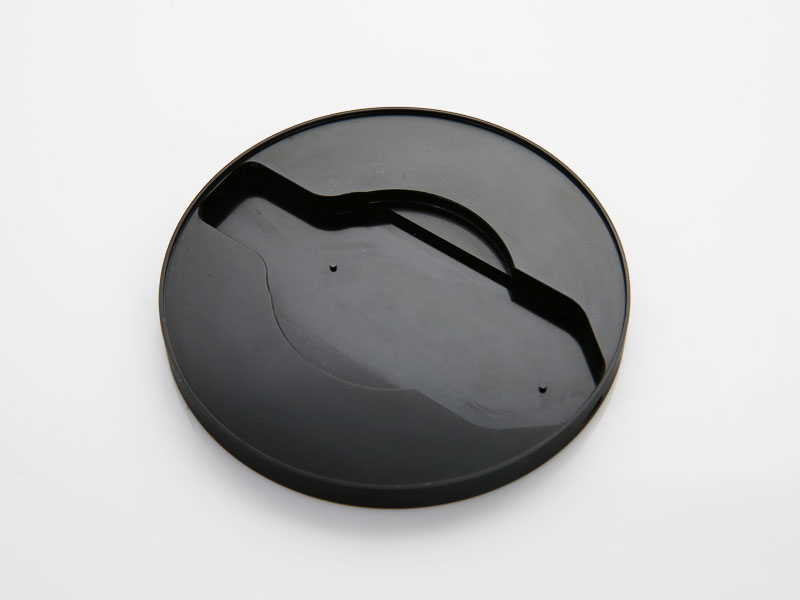
By using CNC machining for plastic, manufacturers can achieve precision, reduce production time, and expand the range of possible applications across industries that demand advanced manufacturing capabilities.
Benefits of CNC Machining Plastic
CNC machining offers several key advantages, particularly when it comes to the production of plastic components. By automating processes and incorporating advanced technology, it enhances efficiency, reduces costs, and enables innovation across industries. Below are some of the key benefits of using CNC machining for plastic:
1. Reduced Human Error
One of the primary advantages of CNC machining is its ability to eliminate human error. By automating repetitive tasks, CNC machines reduce the likelihood of mistakes that can occur in manual setups, such as incorrect measurements, misalignment, or inconsistencies in cutting. This automation ensures that each part is produced with consistent precision, improving overall part quality and reducing the need for rework or scrap. As a result, manufacturers benefit from higher-quality outputs and fewer production disruptions.
2. Cost-Effectiveness
CNC machining offers significant cost savings in both labor and material usage. The automation of tasks reduces the need for manual labor, thus lowering associated labor costs. Furthermore, CNC machines can operate continuously, producing large batches of plastic components in less time compared to traditional manufacturing methods. This rapid production reduces lead times and material waste, making it a highly cost-effective option for producing high volumes of parts. The precision of CNC machining also minimizes material wastage, contributing to overall cost reduction and improved profitability.
3. Innovative Solutions
CNC machining brings innovation to plastic manufacturing through the integration of advanced algorithms, cutting-edge software, and sophisticated tooling. These innovations allow manufacturers to tackle increasingly complex design and production challenges that may be difficult or impossible to achieve with traditional methods. CNC machining enables precise control over intricate geometries, multi-axis cuts, and custom designs, opening the door to new possibilities in industries like aerospace, medical, and automotive. As a result, manufacturers can meet evolving industry standards, explore new materials, and create breakthrough products with more flexibility and efficiency.
Considerations in Choosing the Right Material for Your Plastic Machining Projects
Selecting the correct plastic material for a CNC machining project is critical to the success of the application. Factors like mechanical properties, ease of machining, environmental conditions, and the desired final part characteristics must be considered. Here are some key considerations when choosing the right material:
1. Mechanical Properties
Different plastics have varying levels of strength, stiffness, and impact resistance, which can significantly affect the performance of the final part. For example, if you need a part to withstand high impact or wear nylon or polycarbonate would be ideal choices due to their toughness and durability. For parts that require rigidity and resistance to deformation under stress, materials like acrylic or PVC may be more appropriate.
2. Ease of Machining
Some plastics are easier to machine than others. Materials like acrylic and PVC can be machined quickly with fewer challenges, while others, such as polycarbonate, require more careful temperature control to avoid warping or cracking. Additionally, certain plastics may produce chips that can clog tools or require additional cooling during machining. Choosing a material with properties suited to your machining process can help avoid issues like excessive wear on tools, reduced precision, or poor surface finishes.
3. Thermal Properties
Consider how the material behaves under different temperatures. If your parts will be exposed to high heat, materials like polycarbonate or nylon may be preferable due to their higher thermal resistance. Materials like acrylic, while easier to machine, are more susceptible to deformation when exposed to heat. Additionally, CNC machining processes should take into account material thermal expansion to avoid part distortion during or after machining.
4. Final Part Requirements
The final application of the part will often dictate material choice. For high-precision parts requiring optical clarity, acrylic or polycarbonate may be the best choice. For parts that need to be chemically resistant or waterproof, PVC would be more suitable. Additionally, consider the environmental conditions the part will be exposed to—outdoor applications or parts exposed to harsh chemicals might need a more resistant material like polycarbonate, while interior or non-load-bearing components can be made from acrylic or PVC.
5. Cost and Availability
Cost is always a consideration when selecting materials for any machining project. Acrylic and PVC are typically more affordable compared to engineering plastics like polycarbonate or nylon. Depending on the project size and budget, material cost can play a significant role in decision-making. Additionally, consider the material’s availability and lead time, as some specialized plastics may require longer sourcing times.
How to Choose the Right Plastic for Your CNC Project?
Selecting the ideal plastic material for CNC machining is critical to the success of your project. To make the right choice, you must consider a range of factors, from technical specifications to market considerations. Below is a approach to choosing the best plastic for your CNC machining project:
1. Understand the Project Requirements
The first step in selecting the right plastic is understanding the specific requirements of your project. Identify the core functions and performance characteristics the plastic part needs to fulfill. Is the part designed for high strength, durability, or aesthetic appeal? Consider the application scenario—whether the part will be used in mechanical components, housings, or functional prototypes. A clear understanding of these factors will guide your material selection process.
2. Market Research and Cost Analysis
Before making a final decision, conduct thorough market research to evaluate the properties, prices, and performance of various plastic materials. Assess the availability of the material, its cost-effectiveness, and its suitability for your CNC machining process. Compare different plastics based on factors like machinability, strength, and thermal properties. Additionally, consider your target customers’ needs and expectations regarding the final product. A balance between cost and quality is crucial for maximizing both performance and profitability.
3. Evaluate Material Properties
It’s essential to evaluate the mechanical, chemical, and physical properties of potential plastics. For CNC machining, consider materials that offer high precision, good thermal stability, and resistance to wear and chemicals. If the part is required to function in harsh environments, select materials with superior resistance to corrosion or UV degradation. Additionally, consider properties such as strength, flexibility, impact resistance, and ease of machining to match the specific application of the part.
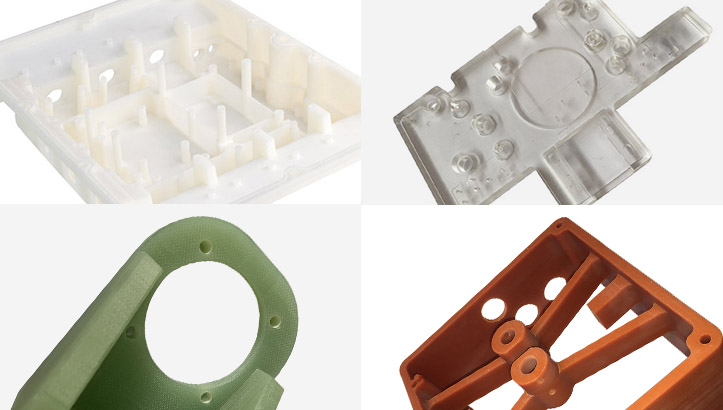
4. Set Selection Criteria Based on Standards
Finally, establish clear selection criteria based on industry standards and technical specifications. Determine the best material by factoring in the intended design, strength requirements, and other relevant performance characteristics. For instance, plastics like PPS (Polyphenylene Sulfide) may be ideal for high-strength, lightweight designs, while PC (Polycarbonate) might be better suited for components requiring impact resistance. Ensure that the material aligns with both the functional needs of the product and any regulatory requirements that may apply to the industry in which the part will be used.
Start Your CNC Machining Plastic Project at VMT
At VMT, we offer cutting-edge CNC machining services for plastic components, ensuring that every part is manufactured with the highest level of precision and quality. Our team is skilled in working with a wide range of plastics, including acrylic, polycarbonate, nylon, and PVC, allowing us to meet the specific requirements of any project. Whether you’re looking to produce prototypes, functional parts, or custom designs, our advanced CNC technology ensures optimal performance and cost-efficiency. We provide expert guidance on material selection, and our state-of-the-art equipment guarantees fast turnaround times without compromising on quality.
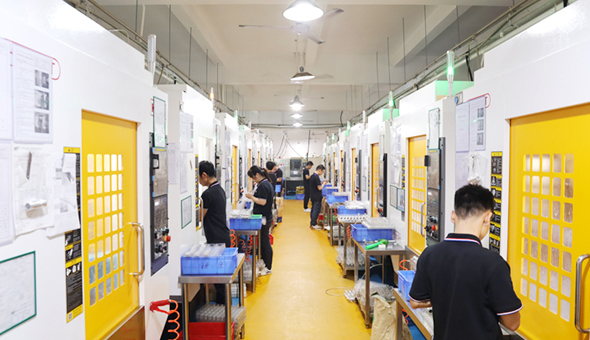
With VMT, you’ll benefit from our flexible solutions tailored to your needs, whether you’re in automotive, aerospace, medical, or consumer goods industries. From the initial design phase to final delivery, we work closely with you to ensure your project is executed to perfection. Contact us now for a free quote!
In Conclusion
CNC Machining Plastic is a game-changer for modern plastic manufacturing. Its precision, efficiency, and versatility make it an essential tool for industries ranging from automotive to medical devices. By leveraging advanced technologies and sustainable practices, CNCmachines plastic remains a vital part of the global plastic landscape, driving innovation and growth while supporting environmental responsibility.
Frequently Asked Questions About CNC Machining Plastic
What is the Best Plastic for CNC Machining?
The best plastic for CNC machining depends on the specific application, but commonly used plastics include Acrylic (PMMA), Polycarbonate (PC), Nylon (PA), and ABS. Acrylic is favored for its clarity and ease of machining, Polycarbonate is known for its strength and impact resistance, while Nylon is durable with low friction properties, ideal for moving parts. ABS offers good toughness and is cost-effective for many applications.
What Materials Cannot be CNC Machined?
While most materials can be CNC machined, some cannot be machined easily due to their hardness, brittleness, or chemical composition. Materials like tempered glass, certain ceramics, and very hard metals like tungsten or hardened steel may be difficult or impossible to machine with standard CNC machines. Materials with extremely low melting points (like some low-grade plastics) can also pose challenges.
Where is CNC Machining Used?
CNC machining is widely used across various industries such as automotive, aerospace, electronics, medical devices, and manufacturing. It’s used to produce precision parts, prototypes, tools, and complex components for industries requiring high accuracy. Applications include engine parts, surgical instruments, housings for electronics, automotive components, and more. CNC machining is favored for its ability to produce high-quality parts with tight tolerances.



